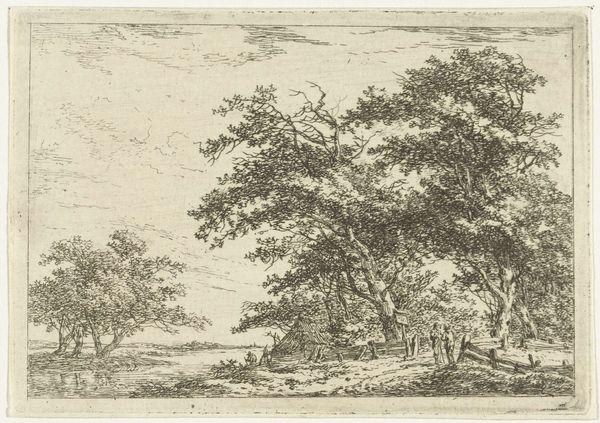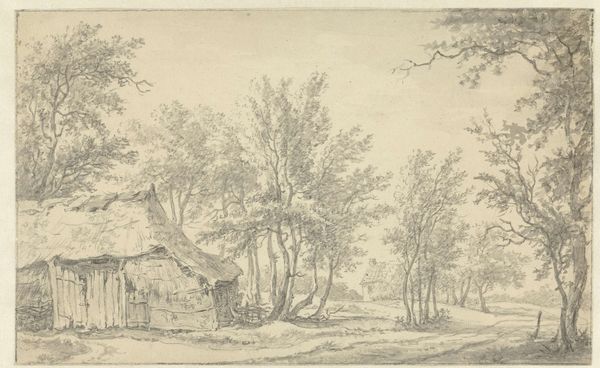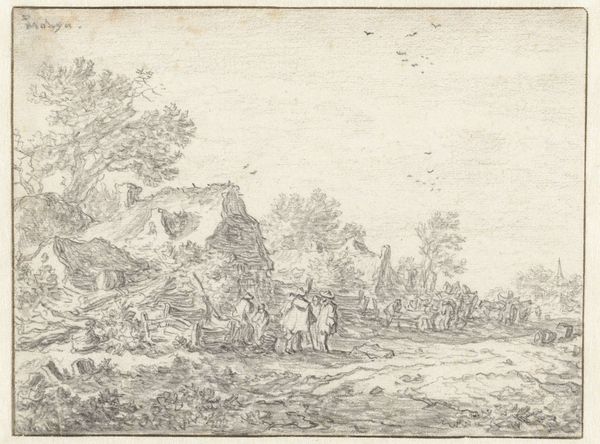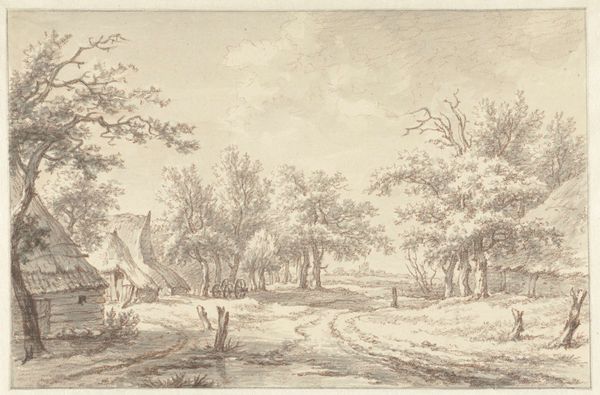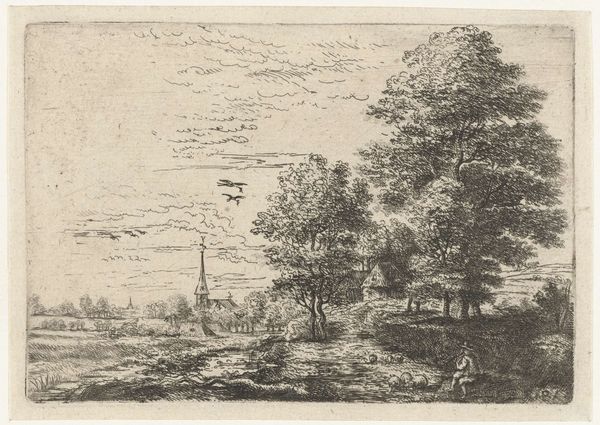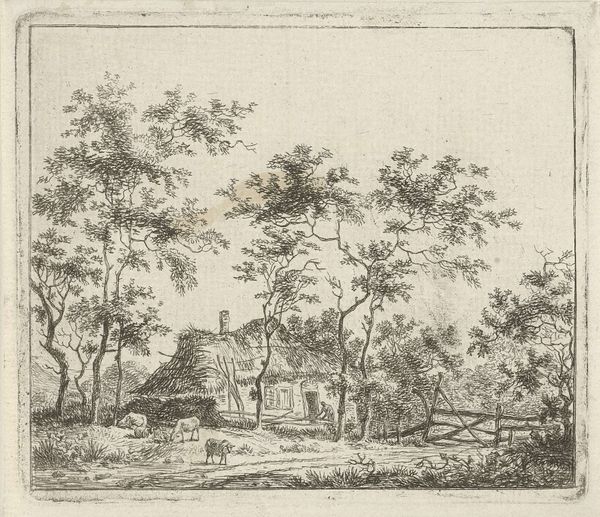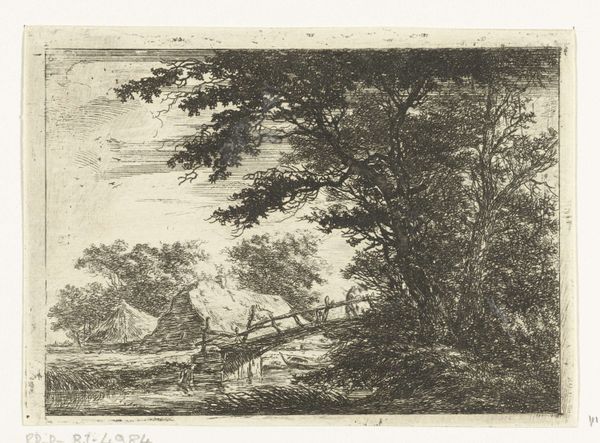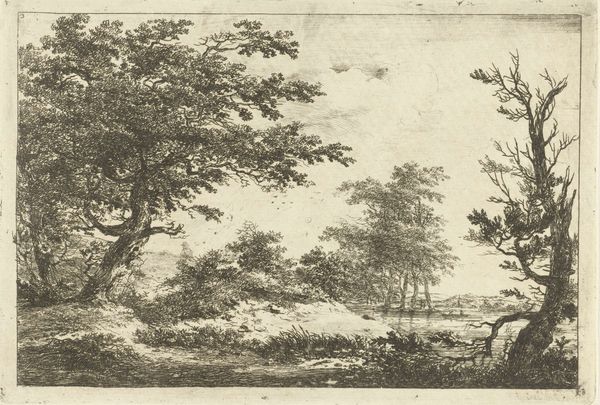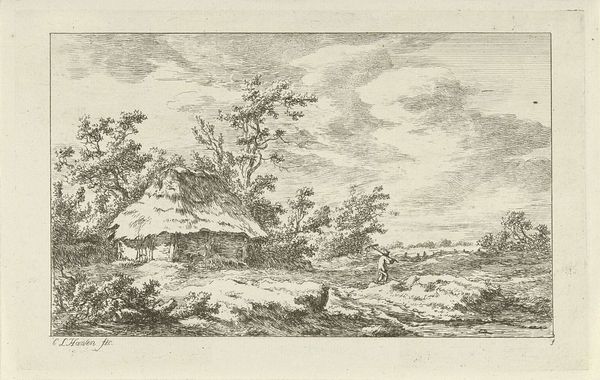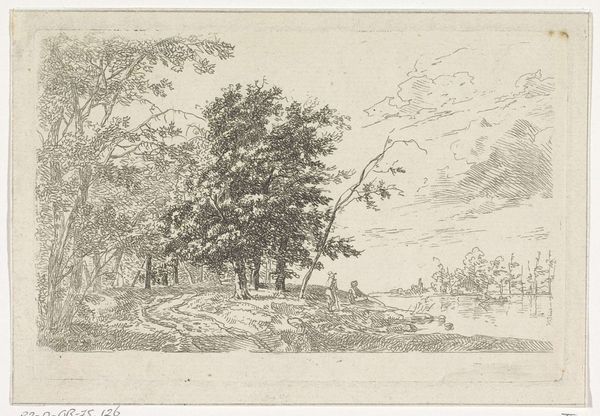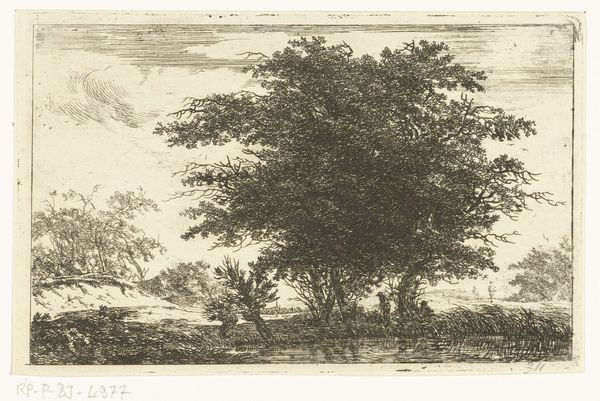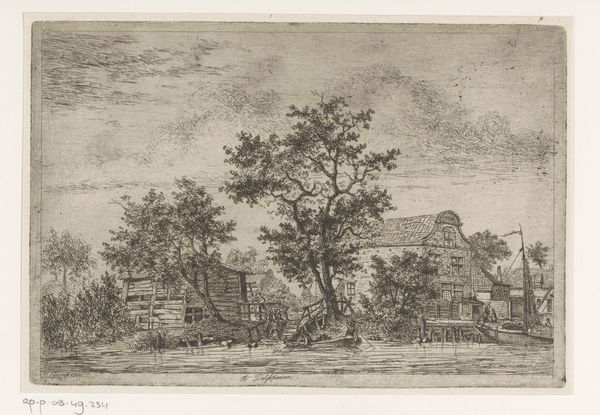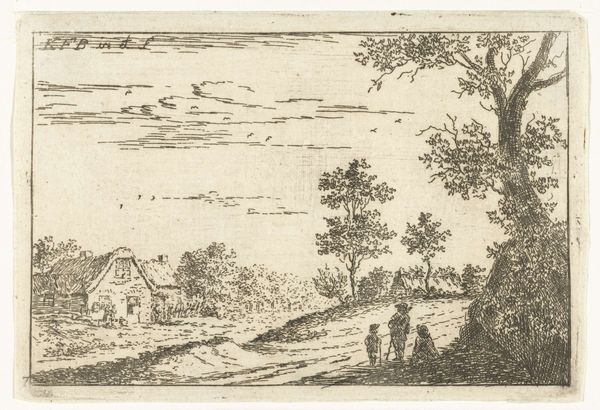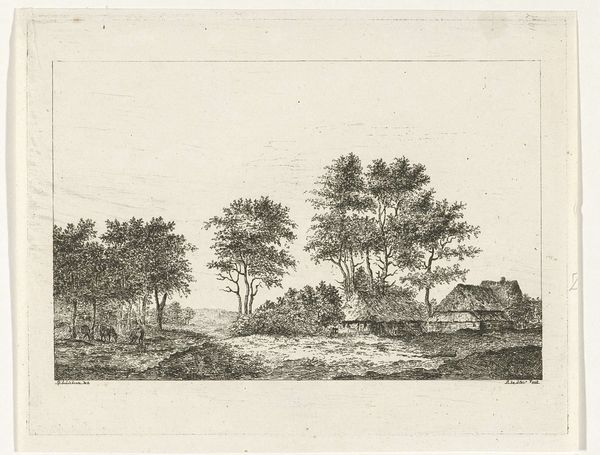
Dimensions: height 115 mm, width 180 mm
Copyright: Rijks Museum: Open Domain
Curator: This is “Stenen brug met twee figuren,” or “Stone Bridge with Two Figures,” an engraving made before 1815 by Hermanus van Brussel. It’s an excellent example of the period's landscape art, demonstrating an engagement with line and atmosphere. Editor: My first impression is quiet melancholy. The muted tones, the lonely figures atop the bridge… it feels like a reflection on the impermanence of things. There's a certain wistful romanticism present. Curator: Indeed. Let’s consider how images of bridges at the time functioned, symbolically. They were, of course, practical, facilitating commerce and movement, but they also carried considerable social weight. Van Brussel's choice to depict this stone bridge, perhaps slightly dilapidated, framed by imposing trees, suggests a narrative far more nuanced. The figures could be anyone, really. But who has access to bridges at this time and why? Editor: Exactly. It immediately makes me think about structures of power and access, both literal and metaphorical. The two figures are perched on the bridge; are they connected to the land? Or just observers passing through, with access afforded to only a privileged few? Their placement draws the eye and makes us question their relationship to this landscape. Are they active agents within it, or merely symbols of a transient society? Curator: The choice of engraving as a medium itself holds weight. Its accessibility meant that such images could circulate widely, shaping perceptions of the landscape and those who inhabited it. Editor: The etching technique contributes significantly. The lines, though delicate, are used to create such evocative textures and light, adding to the sombre atmosphere. The line detail in the tree on the left almost overpowers the structure in the center. What is the power of nature on human's progress, human's ability to connect? It's as though nature is far more important and eternal. It all feels very pointed. Curator: Certainly, the image reflects broader artistic trends towards Romanticism but I also feel its portrayal is heavily intertwined with socio-economic realities of the Netherlands at the time, where landscape paintings were becoming a symbol of national identity and often overlooked existing hierarchies. Editor: It leaves one contemplating our place within the grand narrative of history. The seemingly simple portrayal subtly explores layers of meaning around human presence, class structures and land ownership. It's a striking demonstration of art reflecting life back in fascinating detail. Curator: Absolutely. By carefully arranging the image with social understanding, this picture subtly reveals socio-political layers of its historical period and provokes continuous introspection.
Comments
No comments
Be the first to comment and join the conversation on the ultimate creative platform.
